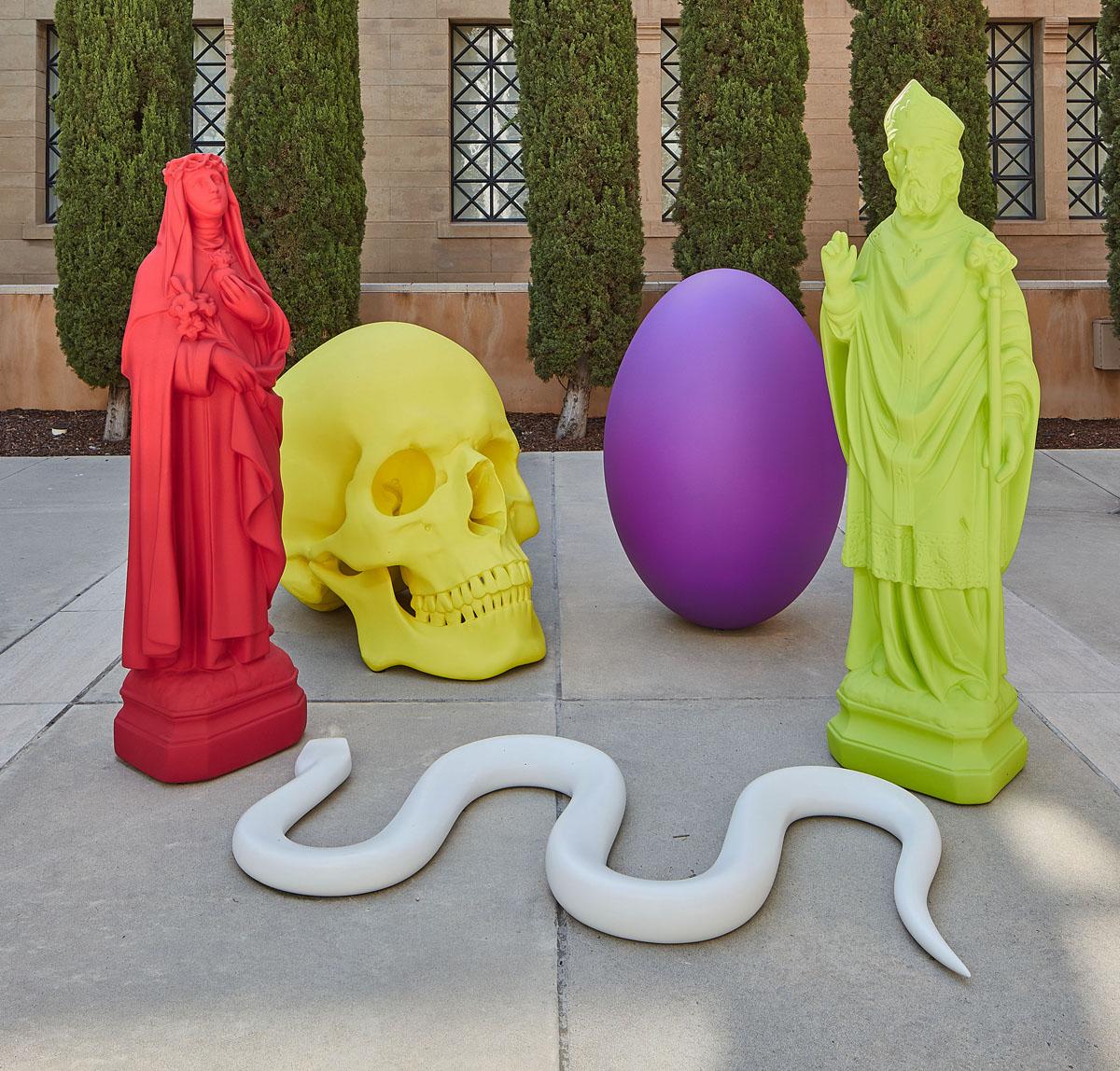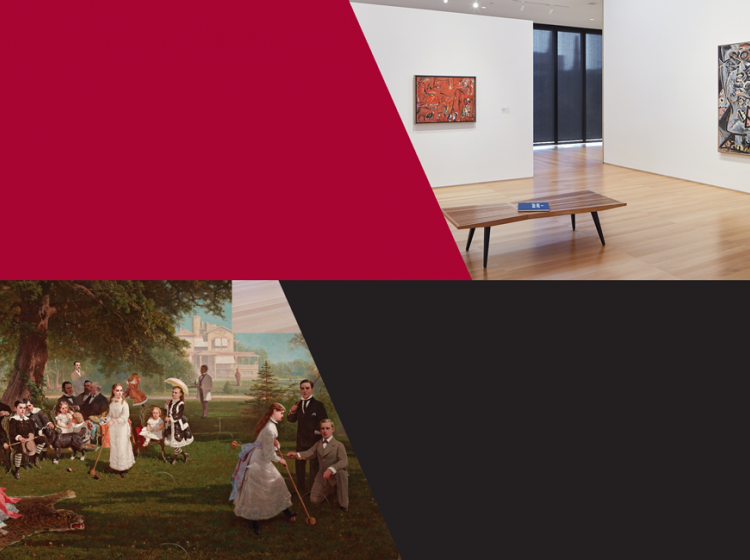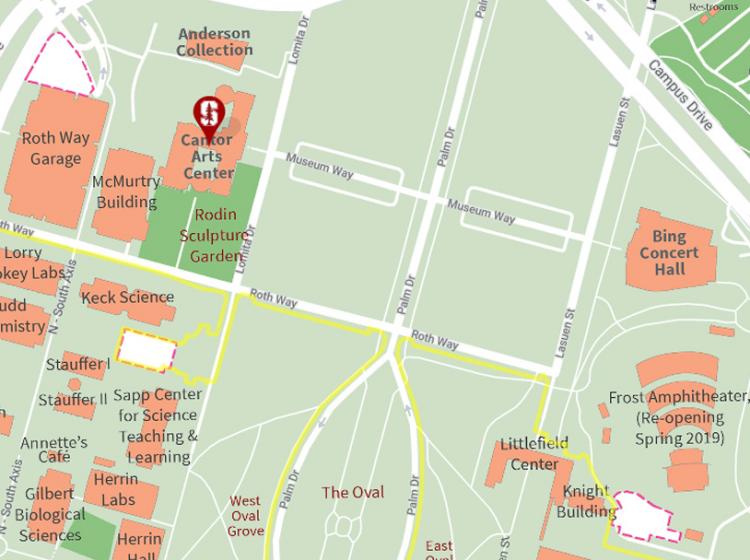Cantor Arts Center
328 Lomita Drive at Museum Way
Stanford, CA 94305-5060
Phone: 650-723-4177

Katharina Fritsch (Germany, b. 1956), 6. Stilleben (6th Still Life), 2011. Bronze, epoxy, and paint. © Katharina Fritsch. James and Dana Tananbaum Family Art Collection. Installation view at the Cantor Arts Center. Photograph by Johnna Arnold
Now on view in the courtyard
Artist Katharina Fritsch (Germany, b. 1956), part of a select group of prominent female sculptors working today, draws on iconography from many different sources for her work. These include religion, folklore, art history, and most importantly personal experiences from her native Germany. Her sculptures are both playful, due to vibrant monochromatic matte colors, and disorienting, due to the larger-than-life scale she utilizes.
Fritsch often uses recognizable images that she meticulously handcrafts into sculptures through a process that entails sketches, models, multiple castings, bronze, copper, or stainless-steel re-castings, and a final coating of vibrant paint. The artist manipulates the scale and color of the objects she uses and presents them as single stand-alone sculptures or in groupings.
The work on view at the Cantor Arts Center inner courtyard from April 20th through April 27, 2020, titled 6th Still Life (6. Stilleben), groups together a life-size St. Catherine painted a deep crimson red, a vibrant yellow skull, an egg painted a deep purple, a green St. Nicholas. In contrast to these multicolored figures, there also is a snake that is devoid of any color. There is a friction between the smooth, colored, industrial exterior of the sculptures and the inherent religious undertones of the figures themselves.
While there are hints as to what might have inspired certain figures, any meaning behind their arrangement remains elusive. Looking at each object individually, the work is bursting with religious iconography. When you step back and look at these works together, as intended, you see allusions to the artistic practice of the still life of the pre-1700s, which often contained religious and allegorical symbolism, or the memento mori, an artwork designed to remind viewers of their own mortality.
Fritsch represented Germany at the 1995 Venice Biennale and has had solo exhibitions at the Kunstmuseum Basel, the San Francisco Museum of Modern Art, the Art Institute of Chicago, Tate Modern in London, and K21 in Düsseldorf. A retrospective exhibition of her work was held at the Kunstmuseum Zürich in 2009 and then traveled to the Deichtorhallen Hamburg. In 2013, The Fourth Plinth Commissioning Group invited Fritsch to create the sculpture Hahn/Cock, which was unveiled in Trafalgar Square in London that summer and is currently on view at the Walker Art Center in Minneapolis and the National Gallery of Art in Washington, DC.
Iconography in the work:
Skull – Representation of death and morality
Snake – Representation of evil/devil
St. Catherine – Established a monastery for women in 1377 outside of Siena and is the patron saint of fire prevention
St. Nicholas – In Germany, December 6th is celebrated as Saint Nicholas Day. He is the patron saint of children
Egg – Represents the resurrection and life

The Cantor Arts Center is located at the intersection of Museum Way and Lomita Drive in the heart of the arts district on the Stanford campus. The Cantor faces the Bing Concert Hall across Palm Drive, northwest of The Oval and the Main Quad.

Parking is limited. Stanford has a new contactless process to pay for parking, using the ParkMobile app, website, or phone. Prior to your visit, we recommend you visit the Stanford Transportation website to learn more about the updated visitor parking process.
